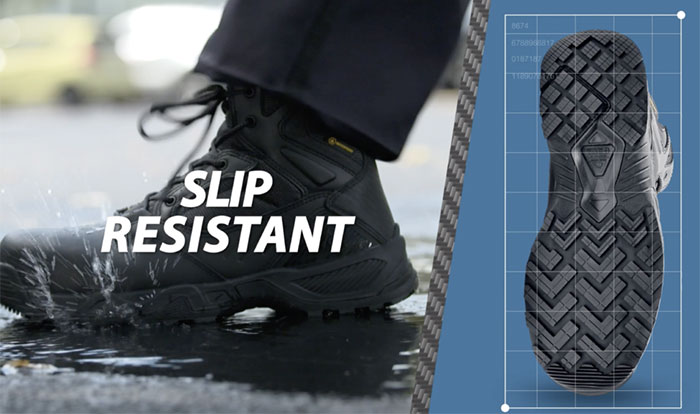How to Create a Corporate Safety Shoe Policy
As a business owner, keeping your employees safe is a big responsibility. By now, you’ve heard about slip-resistant shoes and believe it’s time to set your employees up with a corporate shoe program. Nonslip work shoes can increase the safety of your workers, reduce the number of worker’s compensation claims and improve your business’s bottom line, and a corporate shoe program can ensure that the entire company is on board to reap these benefits.
Once you’ve made the decision to proactively prevent slips, trips and falls with safety shoes and have set up an account with Shoes For Crews, you’ll need to let your employees know the reasoning behind the program and the responsibilities they’ll be held accountable for.
According to an online government resource for the Australian business community, creating formal policies helps your staff make better decisions, adds legitimacy to decisions, guides employee behavior and reduces risk to your business. A formal policy outlining your corporate shoe program is a win-win situation for everyone, and the best way to communicate it is through a clear and easy-to-understand written document that’s passed down from the executive level of your company. Setting up a corporate safety shoe policy can help ensure success, so here’s how to start planning the process.
State Your Goals
The first step is to outline what your envisioned goals are for the safety shoe policy. Why did you decide to implement one in your workplace? Workers will want to know the benefits just as much as you did, and they’ll be able to see why the program is important for the business as a whole. Your main goals are probably something along the lines of:
- Increased workplace safety
- Increased productivity
- Affordability
- Custom shoes to fit your company’s needs
- Improved maintenance practices.
Lay Out the Procedure
After you sign up for a safety shoes program, you’ll need to set up an implementation procedure. First, come up with a timeline. When will your employees be expected to order their work shoes? On what date should employees be expected to wear the shoes?
Next, decide on the rules you’re going to implement. Will employees have a choice of which nonslip shoe models to order or will everyone get the same ones? Will they be allowed to take the shoes home or will they leave them in the workplace? Then, you’ll need to decide the payment option that works best for your company. You can choose to provide employees with the shoes or elect to have them pay for the shoes in full or in part through payroll deduction. Depending on the payment option you choose, what kinds of forms need to be signed? What kind of consequences will arise if employees do not wear the shoes?
Be as detailed as possible in this section of the policy document. The goal is to make sure that everyone knows what’s expected and has all the information necessary to comply with the safety shoe policy.
Provide Details
Finally, offer your employees the details of the corporate safety shoe policy.Outline the payroll deduction program if you’re going to use it and explain how it works. Let employees know about the return and exchange program in case they order the wrong size, which gives them 60 days to return or exchange the shoes for any reason. Also, notify them of any records that will be kept, such as satisfaction surveys or information that will help determine when another pair of shoes should be ordered. Offer any additional information they may need, like where to find the order forms, who to notify of an issue with their order and what would happen if an employee stopped working for your company within a certain amount of time after receiving the shoes.
Employees and Your Bottom line.
Don't Forget To Share This Post!

The Key to Slip-Resistant Safety Shoes
Not all slip-resistant shoes for workers are equal. Find out how genuine slip-resistant footwear carries a high Coefficient of Friction (COF) score.

Workplace Safety 101: Preventing Slips, Trips and Falls
Preventing slips, trips, and falls is Workplace Safety 101 and of the utmost importance. SFC Safety explains how everyone can ensure a safe work environment.

How to Create an Accident Incident Rate Benchmark
How does your company stack up to the national injury incident rate averages? Learn how to calculate accident ratios to benchmark new safety guidelines.